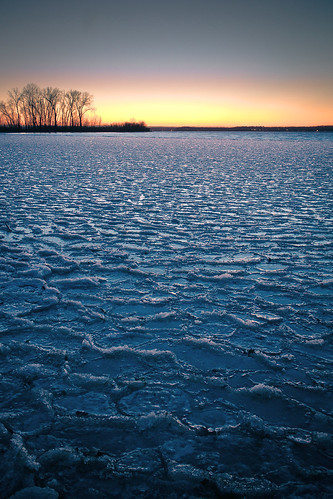Lakes freeze from the top down, because ice is less dense than water, which is why ice floats. The density of liquid water is determined by its temperature, and water is most dense at about 40 F.
Why is that important? As winter sets in, lakes lose energy to the atmosphere, and water near the surface cools, becomes more dense, and sinks. Warmer, less dense water under the surface will rise to replace this surface water. When the entire lake reaches 40 F, the surface water cools further, dropping below 40 F. Because this water is now less dense than the surrounding water, it will stay on the top and continue to cool.
Once the surface water falls to 32 F, it freezes. The freezing then spreads downward into the lake and the ice thickens. Unless the lake is very shallow, you will find liquid water below the ice. This deeper water is about 40 F; fortunately fish can live in this cold temperature.
Freezing first occurs along the shoreline, where the water is shallow. Before ice can form on the surface, the entire water column must first reach 40 F, which is likely to first occur along the shoreline.
Thursday, December 16, 2010
Winter Sunset
Subscribe to:
Post Comments (Atom)


No comments:
Post a Comment